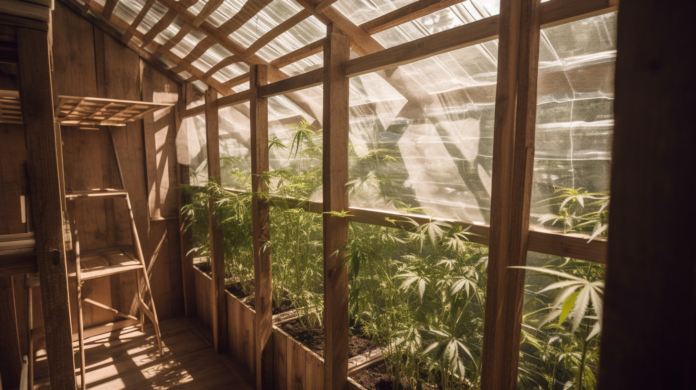Building a greenhouse for cannabis offers a harmonious blend of indoor and outdoor cultivation benefits. You get to harness the power of natural sunlight while maintaining control over the growing environment. This control is not just about shielding your plants from adverse weather conditions; it’s also about optimizing factors like temperature, humidity, and light exposure. Greenhouses can significantly reduce energy consumption since they rely on natural sunlight, eliminating the need to run artificial grow lights for extended periods.
This guide aims to be your go-to resource for constructing a greenhouse for cannabis. From planning and material selection to construction and maintenance, we cover it all. You’ll learn actionable insights and tips to make your greenhouse project a success. So let’s get right to it!
What is a Greenhouse?
A greenhouse is a structure primarily made of transparent material, designed to offer a controlled environment for plant growth. Unlike traditional outdoor farming, a greenhouse allows you to manipulate conditions like temperature, light, and humidity, providing an ideal setting for cannabis cultivation. It serves as a protective bubble, shielding your plants from external factors that could hinder their growth.
Advantages of a Greenhouse for Cannabis Plants
The benefits of using a greenhouse for cannabis cultivation are manifold. First, it offers environmental control, allowing you to adjust temperature, humidity, and light conditions. This control translates into better potency, aroma, and flavor of the cannabis. Second, it provides a layer of protection against pests, significantly reducing the risk of infestations. Lastly, it’s energy-efficient. Utilizing the sun’s natural light cuts down on electricity costs, making it a sustainable option for long-term cultivation.
Types of Greenhouses
Greenhouses come in various shapes, sizes, and designs, each with its pros and cons.
- Small Pop-Up Greenhouses: Budget-friendly and ideal for hobby gardeners with limited space. These are easy to set up but offer limited environmental control.
- Walk-In Greenhouses: Provide more room and are suitable for those with a bit more space and a higher budget. They offer better environmental control compared to small pop-up greenhouses.
- Polytunnel Greenhouses: Popular for commercial production due to their size and better build quality. These are semi-circular, tunnel-like structures covered in polyethylene.
- Professional Outdoor Greenhouses: The most expensive but offer the best in terms of size, build quality, and environmental control. These are ideal for large-scale, commercial cannabis cultivation.
Planning Your Greenhouse
Location
The location of your greenhouse is crucial for maximizing sunlight exposure. Choose an area that receives ample sunlight throughout the day. The orientation of the greenhouse should also be considered to ensure that plants get an even distribution of light, which is vital for their growth.
Size and Scale
The size of your greenhouse will depend on several factors: the number of plants you intend to grow, the space available, and your budget. It’s essential to plan meticulously, ensuring that you have enough room to move around comfortably inside the greenhouse. The size will also influence other elements like ventilation and lighting.
Budget
Budgeting is a critical aspect of planning your greenhouse. Costs can quickly escalate if not carefully managed. Factor in the costs of materials, construction, and additional features like lighting and ventilation systems. Always keep a buffer for unexpected expenses.
Materials Needed
Structure
The structure of your greenhouse can be made from various materials like metal, wood, or PVC. The choice of material will depend on your budget, the size of the greenhouse, and the climatic conditions in your area.
Covering
The covering material needs to be transparent to allow sunlight to penetrate. Options include glass, plastic, or polycarbonate sheets. Each has its advantages and disadvantages in terms of durability, light diffusion, and cost.
Flooring
Flooring options range from simple soil to concrete. The choice will depend on your preference for drainage and ease of movement inside the greenhouse.
What is the Best Material to Build a Greenhouse?
The best material for your greenhouse will depend on your specific needs, including budget, size, and climatic conditions. However, a combination of a metal frame with polycarbonate sheets is often recommended for its durability and excellent light transmission.
A Step-by-Step Guide to Building a Greenhouse for Cannabis
Foundation
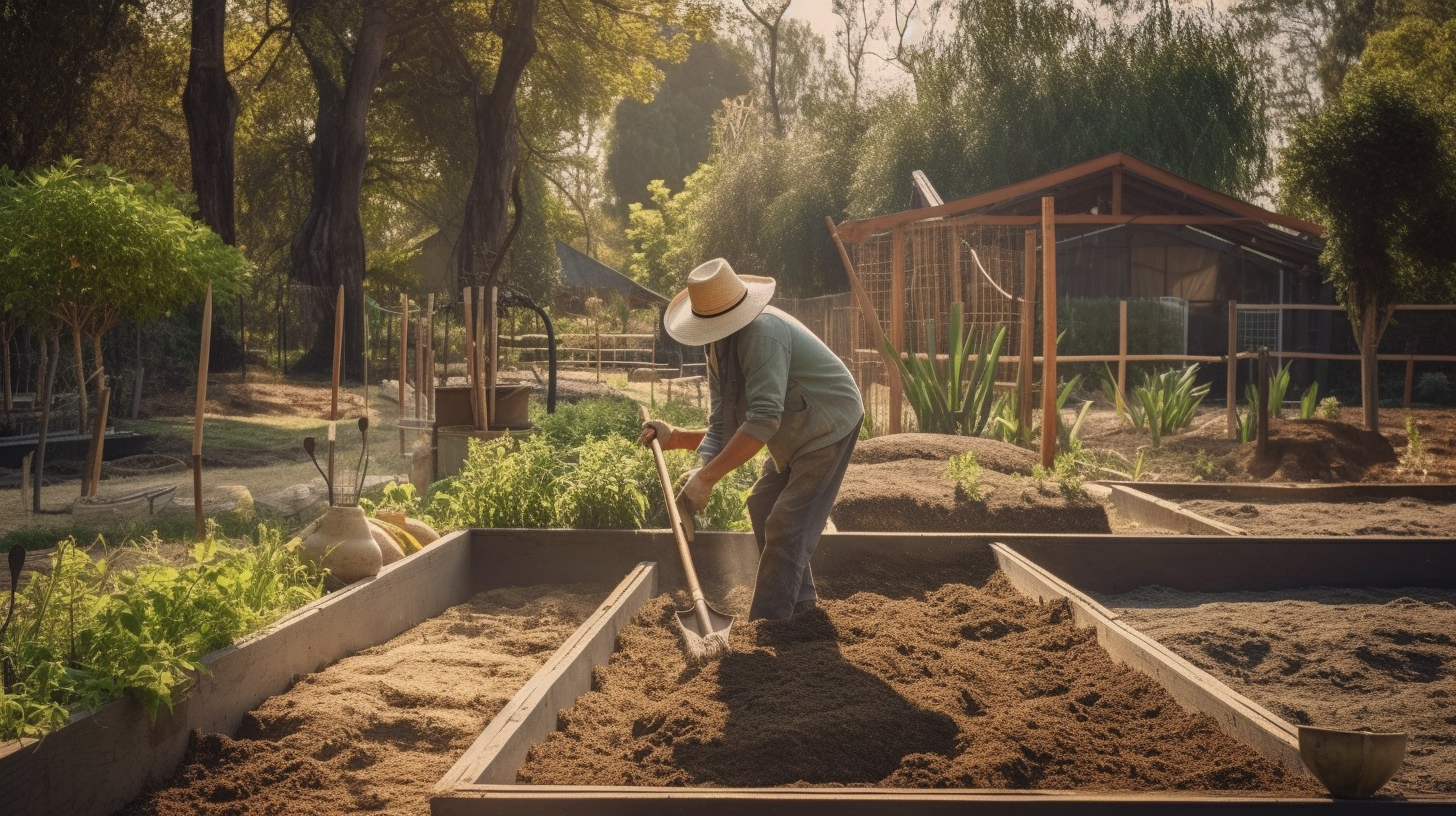
- Site Preparation: Clear the selected area of any debris and level the ground.
- Material Selection: Choose between concrete slabs or wooden planks for the foundation.
- Laying the Foundation: If using concrete, prepare the mix and pour it into a pre-made mold. For wooden planks, secure them in place using screws.
Frame Setup
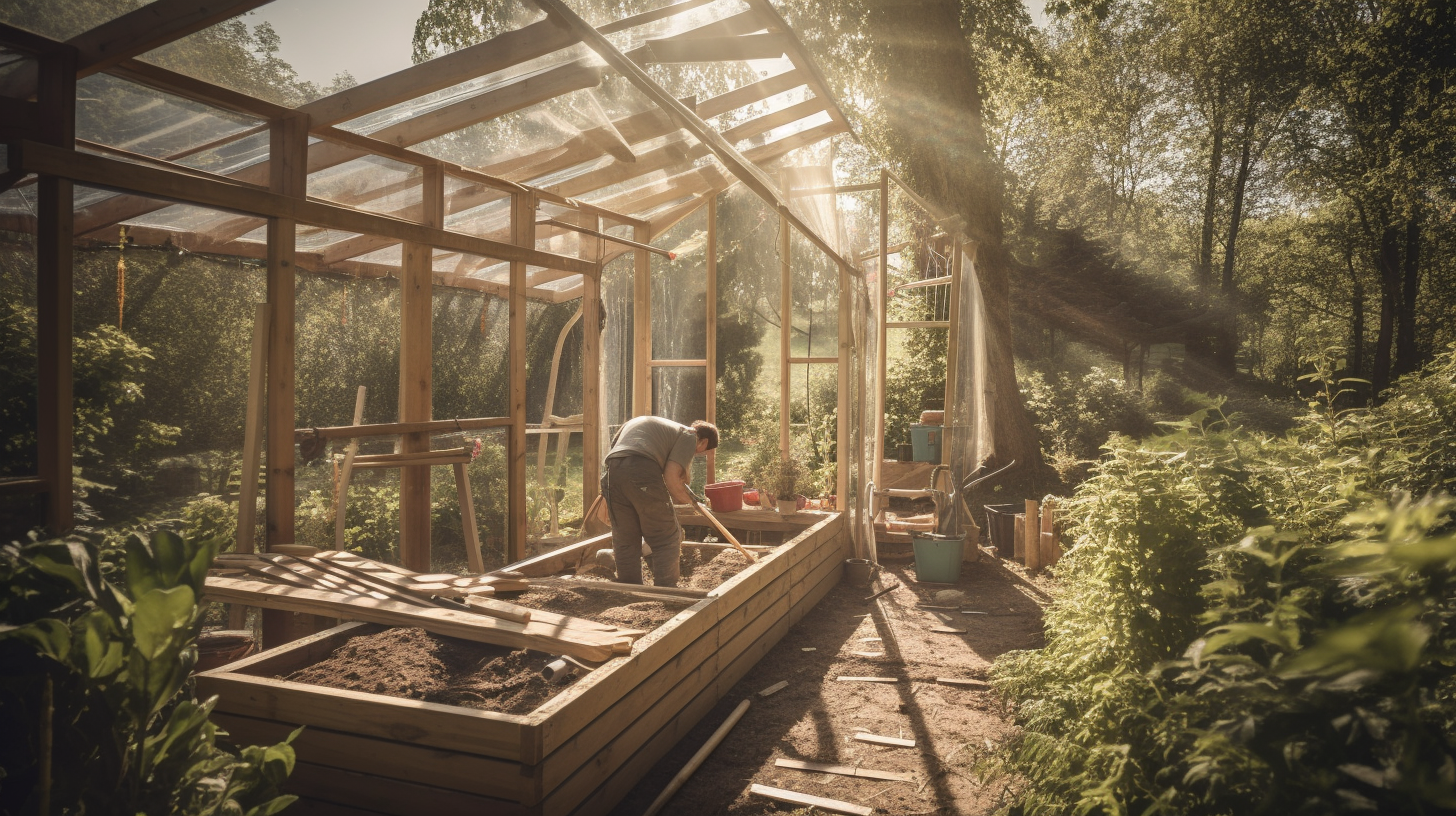
- Material Preparation: Cut the chosen material (wood, metal, or PVC) into pieces according to your design specifications.
- Assembling the Frame: Start by setting up the vertical posts, followed by the horizontal beams. Secure them using screws or bolts.
- Cross-Bracing: Add diagonal braces for additional stability.
Cover Installation
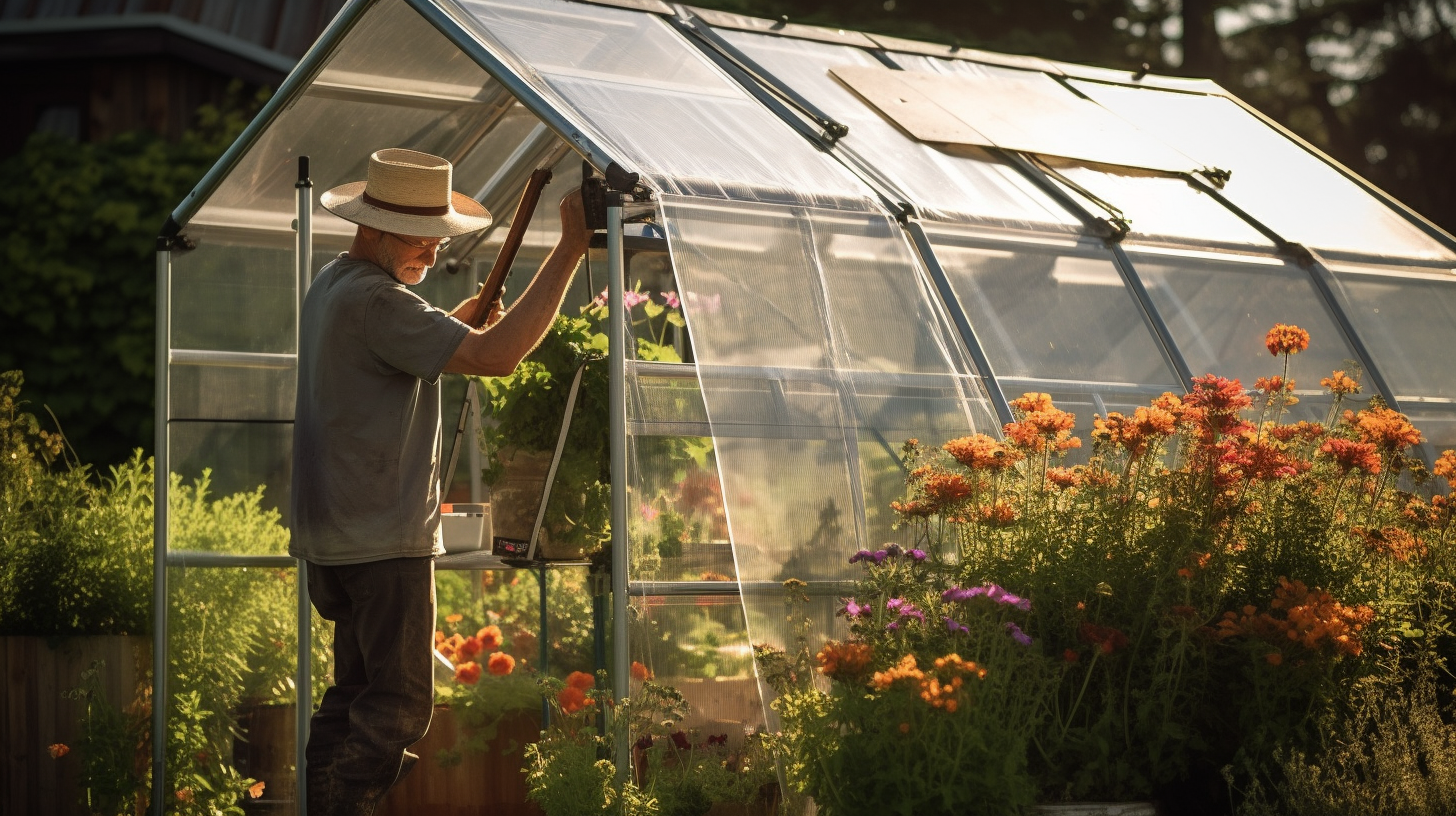
- Measuring and Cutting: Measure the frame and cut the covering material accordingly.
- Attachment: Start from one end and attach the covering to the frame using clips or screws. Make sure it’s taut to prevent any sagging.
- Sealing Edges: Use weatherproof sealant around the edges to prevent air and water leaks.
Flooring
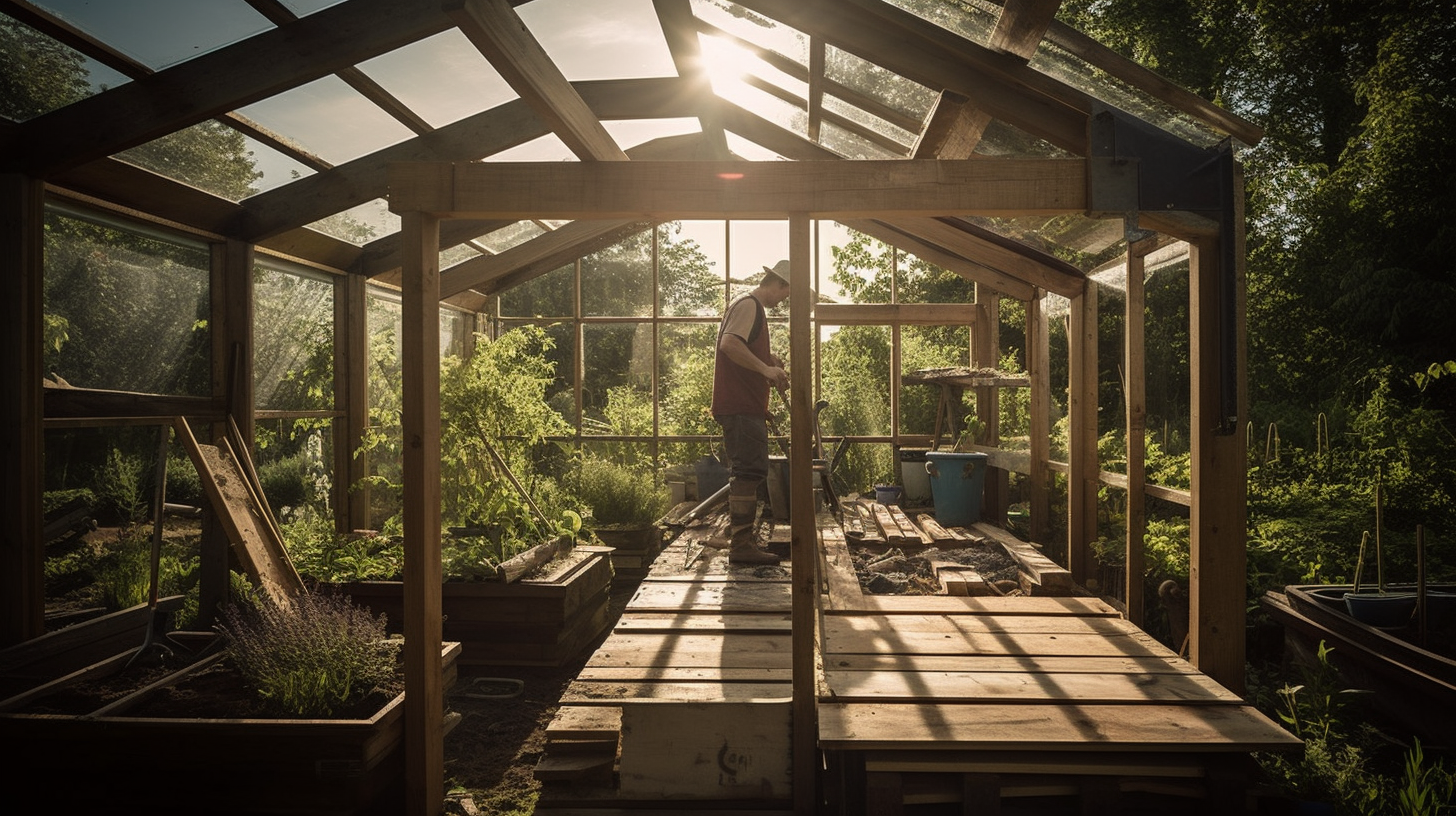
- Material Selection: Choose between soil, gravel, or concrete for the flooring.
- Preparation: If using soil, make sure it’s leveled and free of weeds. For gravel, lay a weed barrier before spreading the gravel. For concrete, prepare the mix and pour it into the designated area.
- Installation: Lay down the chosen flooring material evenly, making sure it’s level.
Soil Preparation for Cannabis Plants
Choosing the right soil is crucial for successful cannabis cultivation in a greenhouse. The ideal potting medium should be a balanced blend of 40% sand, 40% silt, and 20% clay. This combination ensures good drainage and nutrient absorption. Keep the soil’s pH between 5.8-6.2 for optimal nutrient uptake. For a nutrient-rich environment, consider adding organic amendments like compost or worm castings. Living soil, rich in microbial life, can further boost plant health and resistance to stress.
Ready to take your cannabis cultivation to the next level? Learn more about the best soil for optimal growth here.
Climate Control
Ventilation
Ventilation is a critical aspect of climate control in a greenhouse for cannabis. Proper air circulation prevents the buildup of humidity and helps in temperature regulation. It’s essential to install vents or fans to ensure that fresh air circulates throughout the greenhouse, reducing the risk of mold and diseases.
Temperature
Maintaining a consistent temperature is vital for the optimal growth of cannabis plants. Too much heat can cause stress, while too low temperatures can slow down growth and even kill the plants. Automated climate control systems can help maintain the ideal temperature range, but manual adjustments can also be effective if monitored closely.
Humidity
Humidity levels need to be carefully managed to prevent mold growth and other diseases. Dehumidifiers can be used to control humidity, especially during the night when it tends to rise. It’s crucial to monitor humidity levels regularly and make adjustments as needed.
Additional Features
Lighting
While natural sunlight is the primary source of light in a greenhouse, supplemental lighting may be necessary, especially during shorter days or cloudy weather. LED or HID lights are commonly used for this purpose, providing the plants with the light spectrum they need for growth.
Irrigation
An efficient irrigation system is essential for the optimal growth of cannabis plants. Drip irrigation or soaker hoses are commonly used methods. Some growers also opt for automated systems that can be controlled via smartphone apps, offering convenience and precise water delivery.
Security
Security measures are crucial to protect your investment. This could range from simple locks to more advanced systems like CCTV cameras and alarm systems. Given the value of cannabis, it’s advisable to take security seriously to prevent theft or vandalism.
Maintenance Tips for Growing Cannabis in a Greenhouse
Daily Checks
Daily monitoring is essential for the successful cultivation of cannabis in a greenhouse. This includes checking the temperature, humidity, and general health of the plants. Early detection of any issues can prevent bigger problems down the line.
Seasonal Adjustments
As seasons change, so do the requirements for cannabis cultivation. For instance, additional heating may be necessary during winters, while more ventilation could be required in the summer. Being proactive about these adjustments can lead to a more successful harvest.
Next Steps
Once your greenhouse is up and running, the next step is to focus on optimizing the growing conditions. This involves regular monitoring and adjustments to ensure that your cannabis plants are thriving.
Common Mistakes to Avoid
One of the most common mistakes is poor planning, which can lead to a host of problems, from budget overruns to inadequate space. Another mistake is neglecting climate control, which can result in suboptimal growing conditions. Ignoring security measures can also be costly, given the value of the plants.
Wrapping Up
Building a greenhouse for cannabis is a rewarding but challenging endeavor. Proper planning, material selection, and climate control are key to a successful setup. With the right approach, a greenhouse can offer an ideal environment for cannabis cultivation, yielding high-quality produce.
FAQs about Greenhouse for Cannabis
Q1. What is the ideal temperature for growing cannabis in a greenhouse?
The ideal temperature for growing cannabis in a greenhouse ranges from 70 to 85°F (21 to 30°C) during the day and 50 to 70°F (10 to 21°C) at night. Maintaining these temperatures helps optimize plant growth and yield.
Q2. How do I control pests in my greenhouse?
To control pests in a cannabis greenhouse, employ an integrated pest management (IPM) strategy that includes regular inspections, natural predators, and organic pesticides. It’s crucial to identify the type of pests early on and treat them accordingly to prevent infestations.
Q3. Can I use a greenhouse for year-round cannabis cultivation?
Yes, a greenhouse can be used for year-round cannabis cultivation, especially if it’s equipped with climate control systems. These systems allow you to regulate temperature, humidity, and light levels, making it possible to grow cannabis in any season.
Q4. What are the best security measures for a cannabis greenhouse?
Effective security measures for a cannabis greenhouse include installing proper fencing and lighting to deter unauthorized access. Video surveillance cameras should be placed at all entry and exit points. Additional layers of security can include photoelectric beams and guard services. It’s advisable to consult with a professional security advisor for a comprehensive security plan.
Q5. How do I choose the right size for my greenhouse?
The size of your greenhouse depends on your growing method and the plant density you aim to achieve. For vertical growing with multiple layers, smaller containers like 2.5-gallon pots are recommended. For single-layer indoor or greenhouse growing, a 2.5 to 4-gallon container is advised. The container size should also consider the plant’s growth phase and root system size.


